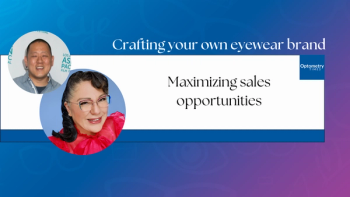
- July/August digital edition 2025
- Volume 17
- Issue 04
The National Optometric Association: Looking back to move forward
Sherrol A. Reynolds, OD, FAAO, details how NOA's history impacts its vision for the future.
History of the NOA
The NOA was founded during the Civil Rights Movement in 1969 by the late Drs. C. Clayton Powell and John L. Howlette, with 25 other courageous optometrists, with a mission to advance eye care and promote inclusion and diversity within the field of optometry. The NOA faced many challenges and difficulties, but the organization forged forward and grew. For more than 50 years, a core mission of the NOA has been to increase the number of diverse optometrists to deliver vision and eye health care needs to people of all races, ethnicities, and backgrounds. The NOA promotes the delivery, effectiveness, and efficiency of eye and vision care services in communities with little or no eye care presence. Increasing the number of diverse optometrists to reflect the patient population it serves has been its core mission. Today, the NOA’s commitment to mentorship, education, advocacy, and community outreach remains as crucial as ever due to the growing diversity of the US population.3,4
In recognition of their significant and enduring contributions to the advancement of visual health and the increase in racial and ethnic diversity in the optometric profession, Powell and Howlette were the first Black optometrists to be inducted into the National Optometry Hall of Fame. The NOA continually challenges its members to greater professional and personal excellence. Over the years, other NOA members who have been trailblazers in the profession, such as Drs. Edwin Marshall, Melvin D. Shipp, Marvin R. Poston and many more, have been inducted into the National Optometry Hall of Fame, named American Optometric Association National Optometrist of the Year, served as deans or presidents at schools and colleges of optometry, become industry leaders, and/or served as presidents of major optometric organizations.
Since the NOA’s founding, there has been a significant increase in diverse student representation at US schools and colleges of optometry (Table).5-7 The NOA has created a student arm of the organization, the National Optometric Student Association (NOSA), and worked closely with deans and presidents at optometry schools and colleges and the Association of Schools and Colleges of Optometry (ASCO). The NOA has provided millions of dollars in matriculation support and financial scholarships through its National Optometric Foundation. These efforts have led to an increased number of diverse students in schools and colleges of optometry in recent years, with the enrollment of Black students at its highest level ever: 4.3% according to a recent ASCO report. 6
One of the long-standing efforts of the NOA has been to increase awareness of the optometry profession and recruit students in Historically Black Colleges and Universities (HBCU). For more than 50 years, members of the NOA would travel to various HBCUs and other undergraduate programs to increase awareness about optometry and recruit diverse students into the profession. This led to the development of NOA’s Visioning the Future mentorship initiative, in partnership with the Marvin R. Poston, OD Education and Development Donor Advised Foundation and VSP Vision. Launched in 2019 during the NOA’s 50th year celebration, the Visioning the Future mentorship program is the first mentoring and recruitment initiative focused on HBCUs. The program identifies, encourages, and supports students who are underrepresented in the profession to envision themselves as optometrists. The program was inspired by the legacy of NOA member Dr Marvin R. Poston, a trailblazer in the field of optometry and the first Black American admitted to the University of California, Berkeley, School of Optometry and a cofounder of VSP Vision. The program has awarded hundreds of thousands of dollars in grants and support to deserving students. This year, the NOA is proud to celebrate its first cohort of students, the class of 2025, as they graduate.
The NOA strives to enhance the delivery, effectiveness, and efficiency of quality eye and vision services and outreach to underserved communities. Its annual Serve Where You Go Event, in partnership with the VSP Vision mobile clinic, upholds its commitment to making eye care accessible to all. Each year, during the NOA’s convention, its doctors and students partner with the VSP Vision mobile clinic to provide eye health care to an underserved community. The NOA’s Three Silent Killers program is another initiative aimed at increasing awareness, education, and prevention of visual and systemic complications from diabetes, glaucoma, and high blood pressure—conditions that disproportionately impact underserved communities. In partnership with the National Optometric Foundation, the NOA holds a monthly eye health educational webinar. With the growing concerns about the health of children’s vision, the NOA has developed the ACHIEVE (All Children’s Health Initiative for Eye and Vision Excellence) campaign aimed at increasing awareness of children’s vision in underserved communities.
Moving forward
Today, as challenges to achieving diversity, equity and inclusion mount, the NOA’s mission and mandate remain as relevant as ever: It is committed to achieving a diverse and inclusive optometric profession and vision and eye health equity across all population groups. The NOA does not exclude membership based on race or ethnicity and has had 2 Latinx presidents and several nonminority members, including deans and presidents of schools and colleges of optometry. The NOA is comprised of diverse optometrists and students of optometry (particularly Blacks) across the US, Canada, and Puerto Rico. Today, the NOA is proud to still be the largest optometric association representing diverse providers.
References
- Varma R, Vajaranant TS, Burkemper B, et al. Visual impairment and blindness in adults in the United States: demographic and geographic variations from 2015 to 2050. JAMA Ophthalmol. 2016;134(7):802-809. doi:10.1001/jamaophthalmol.2016.1284
- Elam AR, Tseng VL, Rodriguez TM,
Warren AK,Colema n AL; American Academy of Ophthalmology Taskforce on Disparities in Eye Care. Disparities in vision health and eye care. Ophthalmology. 2022;129(10):e89-e113. doi:10.1016/j.ophtha.2022.07.010 - Penn DC, Oladeinde YA, Avilés-Santa L, Pérez-Stable EJ. Increasing and diversifying the primary care physician workforce. Fam Pract. 2025;42(1):cmae076. doi:10.1093/fampra/cmae076
- Togioka BM, Young E. Diversity and discrimination in health care. In: StatPearls. StatPearls Publishing; 2024.
https://www.ncbi.nlm.nih.gov/books/NBK568721/ - Chen EE. Comparing proportional estimates of U.S. optometrists by race and ethnicity with population census data. Optometric Education. 2012;37(3):107-114.
- Race/ethnicity of full-time doctor of optometry students, 2007-2024. Association of Schools and Colleges of Optometry. May 2024. Accessed May 2025. https://optometriceducation.org/wp-content/uploads/2024/05/Enrollment-Race-1-1.pdf
- National Optometric Foundation. National Optometric Association. Accessed July 1, 2025. https://nationaloptometricassociation.com/foundation/
Articles in this issue
4 months ago
Myopia is an escalating global health crisis4 months ago
Inside genetics and glaucoma5 months ago
Embracing dry eye5 months ago
A case of orthokeratology for high myopiaNewsletter
Want more insights like this? Subscribe to Optometry Times and get clinical pearls and practice tips delivered straight to your inbox.













































